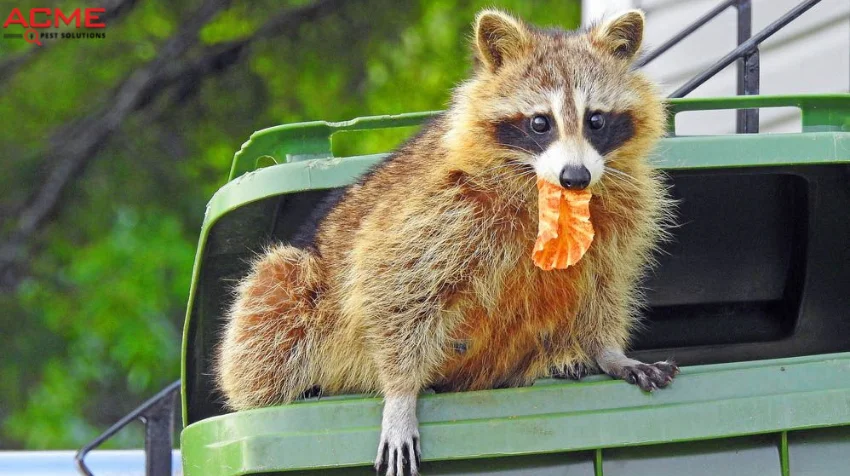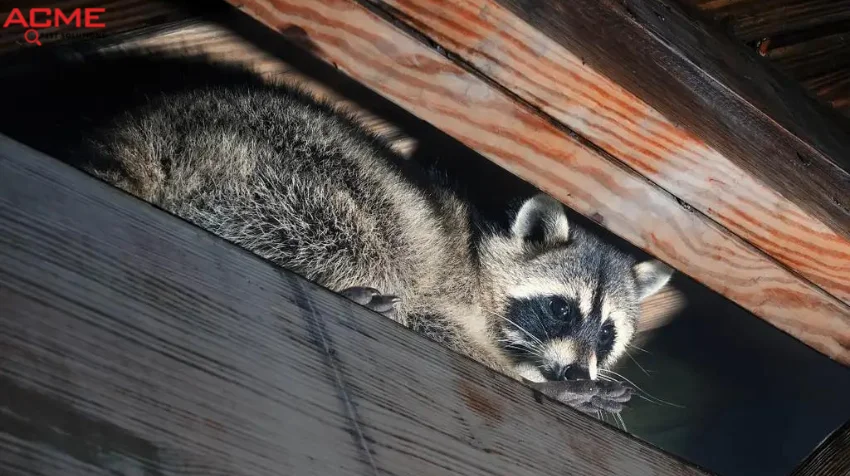Best Way to Get Rid of Raccoons
Raccoons are among the most commonly encountered animals. They have adapted to living with humans. They have learned that garbage cans and dumpsters are excellent sources of food, and that houses are the best habitats for them.
As you know that What are Raccoon then you should also know that a mother raccoon will often tear a hole in a roof to access an attic, where they will make quite a mess and a lot of noise. If you have a raccoon in the attic, it’s going to make a big mess and leave a lot of droppings. However, with proper preventive measures, traps, and natural repellents, you can effectively eliminate them. Let’s discover some practical ways to get rid of raccoons:

Understanding the Raccoon Problem
Signs of Raccoon Infestation
The following are some common signs of raccoon infestation in residential and commercial areas:
- Constant noises from the walls and basements
- Droppings, urine, and foul odours
- Frequent raccoon sightings around your property
- Damaged entry points and holes
- Nesting material, debris, and torn insulation
- Scratch marks and visible tracks
Common Raccoon Entry Points
There are many raccoons in Canada, and they frequently enter homes. Raccoons are curious creatures and will often explore anything that looks interesting to them, including your home. If you have raccoons in your home, it’s essential to know where they came from and how to identify them.
Through holes in your roof or chimney, raccoons can access your home. They are known for their dexterity, which enables them to open doors, cabinets, and even garbage cans with ease.
Dangers of Raccoon Infestation
Property Damage
Raccoons are expert climbers, and they love to raid your garbage can or backyard bird feeder. If they’re not getting their food from these sources, they’ll likely raid your pet food or food storage containers.
Noise
Raccoons love to make a lot of noise at night. They’ll knock over your trash can, chew on your tree, or raid your bird feeder at all hours of the night.
Diseases
Raccoons are notorious for carrying diseases, and they’re also known for spreading them to other animals. They can also cause Rabies, Salmonella, Leptospirosis, and other potential diseases. If you have a pet, be sure to keep it up to date on its rabies vaccination.

How to Get Rid of Raccoons?
To prevent attracting wildlife, avoid leaving pet food or birdseed outside, especially after dusk. Keep your garbage cans in your garage until the day of pickup. If they have to be outside, use heavy and sturdy metal trash cans and secure the lids with bungee cords or zip ties. Pick up fruits as soon as they fall if you have fruit trees.
In case of severe infestation, the best solution to your problem is to hire a Raccoon removal service in Toronto. The expert will assess the situation and decide whether to trap and relocate the wildlife or simply reinforce your home so that the raccoons won’t be an issue for you.
Best Traps for Raccoons
Traps, such as live cages and one-way doors, allow for the safe capture and relocation of animals. These traps are made of durable wire mesh. Bait the trap and place it near high-activity areas. Lure the trap with bait such as marshmallows, sweet corn, or any other food with an irresistible scent.
Once a raccoon approaches the trap to get food, the door of the trap is closed, and the animal will not find a way to get out. Now you can relocate them to their natural habitats. However, make sure to use traps that are compliant with Ontario’s Local Wildlife Regulations. If you have captured the animal and don’t know what to do, you can call Acme for the relocation of raccoons in the GTA and other wildlife.
Natural Raccoon Repellents
Using natural repellents is a humane way to get rid of raccoons. Raccoons are sensitive to strong scents and tend to avoid areas with strong scents. This option includes using garlic, hot pepper spray, ammonia-soaked cotton balls, or cat urine-soaked balls. Placing these repellents near entry points, holes, and gardens keeps wild animals away.
Similarly, using bright artificial lights, sprinklers, and motion-activated devices also discourages them from returning.
Call a Wildlife Professional
Raccoon trapping and removal can be a daunting task. DIY raccoon removal methods often result in injuries, spread of diseases, or harm to both the animal and you. In case you notice persistent raccoon activity, it’s high time to call a professional.
Acme Pest Solutions offers humane raccoon removal from your property in no time. We provide affordable raccoon removal services in Toronto as well as raccoon removal services in Mississauga. Our experienced professionals are experts at trapping and humanely remove them from your property while preventing any further damage.
How to Remove a Raccoon from Attic
Raccoons are one of the most common animals in an attic, and often make their way up to the roof where they can eat trash and other materials. Removing them from the attic is crucial to maintaining a clean and organized home.
Our team begins with an inspection, notes entry points, and creates a customized plan to remove the raccoon from the attic. We then install live traps in areas where raccoons are active to capture them. Our team relocates the animals and cleans your attic, restoring it to its original condition.
Raccoon Preventive Tips
- Secure the trash can.
- Bring in pet food.
- Keep an eye on your bird feeders.
- Pick up fallen fruits and nuts.
- Seal off your chimney.
- Never intentionally provide food for raccoons.
- Put a fence around your garden, fish pond, compost pile, or newly installed turf.
Frequently Asked Questions (Faqs)
Although raccoons can be found throughout the year, they are most active during the fall and winter.
Raccoon removal service cost depends on the size of the property and the severity of the infestation. You can contact Acme for customized removal plans tailored to your property’s specific needs. (Check best raccoon services and pricing by Acme Pest Solutions)
- Use natural deterrents such as garlic, ammonia balls, or pepper spray.
- Keep the entry points sealed.
- Install humane traps.
- Use sprinkles or motion-activated devices.
- Use bright lights and keep the surroundings clean.
